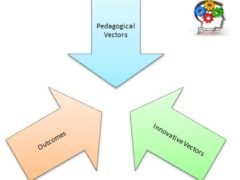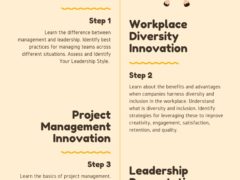Pedagogy incorporates the standardized methods, principles, processes, and values inherent in how information is explored, evaluated, and implemented. Pedagogy thus influences how information is understood and how it is used. Pedagogical vectors in recruitment thus influence how candidates are evaluated, the recruitment models leveraged, and the quality of candidates engaged.
The recruitment process typically follows a specific formula:
- Job opening identified
- Skills identified
- Job description developed
- Job posting
- Resumes received & reviewed against job matrix (etc.)
- Candidates contacted for interviews
- Interviews conducted
- Responses compared
- Decision(s) made
The interview process typically follows a standard process of inquiring about background, knowledge, education, training, and expectations. Responses are then evaluated based on whether they fall within the hiring manager’s understanding of the role, the work environment, and general expectations. Because training is usually short, if offered at all to new candidates, the emphasis is often placed on depth instead of breadth.
The pedagogical approach to recruitment that results will often emphasize repetition in order  to both simplify the hiring process but also to avoid unfair practices. The definition of unfair hiring practices is particular and often reinforces the recruitment of carbon copies whenever possible in an effort to avoid risk and to simplify the on-boarding process.
to both simplify the hiring process but also to avoid unfair practices. The definition of unfair hiring practices is particular and often reinforces the recruitment of carbon copies whenever possible in an effort to avoid risk and to simplify the on-boarding process.
Unfortunately these pedagogical practices also reinforce existing patterns, trends, and performances and limit the opportunity for novel feedback, disruption, or incremental innovations in the business model. Pedagogical vectors to recruitment also often reinforce existing in-group norms, beliefs, and attitudes which can often interfere with diversity and innovation.
The definition of risk and simplifying the on-boarding process warrant further scrutiny but will not be provided here. Instead the emphasis is directed towards the goal of the recruitment process and a discussion of whether reinforcing the status-quo is sufficient for future business and performance goals. In simpler terms, ‘hiring the same gets the same results’. Is your team’s recruitment practices delivering its intended results?
Consider the following constructs:
- Integrity
- Professionalism
- Innovation
- Communication
- Values
- Efficiency
- Productivity
- Financial Stewardship
- Ethics
- Satisfaction, and
- Quality
Are the current pedagogical norms reinforcing the above constructs, as they currently exist, or are they pursuing improvements? Are candidates evaluated based on whether they ‘fit inside the box’ or represent the composite competencies and skills necessary to take the business model to the next level? Consider the often noted observations:
- Healthcare sector is less likely to evaluate a construction background as a ‘fit’

Vancouver area recruiters to work with (and candidate experience rating) - The construction sector is less likely to evaluate a software background as a ‘fit’
- The software sector is less likely to evaluate a service background as a ‘fit’
- The service sector is less likely to evaluate a financial background as a ‘fit’
When the above observations are ‘true’ the likelihood of the candidate being evaluated based through pedagogical vectors and norms increases. When the recruitment vectors (and norms) deviate from these pedagogical models the opportunity to evaluate for core competencies that transcend specific, and build upon overlapping, industries increases. The latter is no small accomplishment and the challenges should not be underestimated as the following often require increased emphasis on competencies and constructs that are new to the existing team members during the on-boarding process:
- Coaching
- Training
- Evaluation
- Change
- Adaptation
- Knowledge acquisition
- Challenging of assumptions
Coaching to the same discrete skills is easy. Coaching to growth enabling and innovative competencies are considerably more difficult. An ecosystem needs to be in place to facilitate and reinforce any paradigm shifts in recruitment.
Pedagogical approaches to recruitment may avoid the additional work mentioned earlier thereby reinforcing their popularity. The risks are often delayed and inadequately recognized even if they surface. Context is everything and determines whether existing pedagogical recruitment vectors are aligned with the business’ future vision. Consider the following questions that determine, and limit, how ‘fit’ is evaluated:
- Integrity without Financial Stewardship
- Ethics without Diversity
- Communication without Accountability
- Quality without Customer Satisfaction
The next question is whether a pedagogical or innovative recruitment approach is warranted for the following situations:
- We need to improve on communication & accountability
- We need to improve on quality & customer satisfaction
- We need to improve on how our ethics are aligned with internal diversity initiatives
- We need to improve on incorporating financial stewardship into our model of integrity
The challenge is to avoid recruitment shortcuts and identify the candidate that can take the business model to the next level. This requires:
| Requirements: | Questions: |
| Creativity | How will this apply? |
| Ability to ‘think outside the box’ (but still remain relevant) | How will this build upon existing performance? |
| Apply overlapping industry constructs and strategies | How will this introduce better ideas & strategies? |
| Ability to provide additional training and orientation to integrate the candidate and the team/environment to one another | What resources are needed to sustain improvements? |
| Reinforce improvements at the candidate and team level(s) | How are the new competencies to be reinforced? |
| Translate discrete skills to general (and adaptive) competencies | What competencies are needed? |
A few questions to consider when developing your company’s recruitment model:
- What competencies are needed to do the job (and grow)?
- What outcomes are needed by the business model in the future?
- What industries use these competencies?
- What can we learn from other industries/companies that ‘do things differently’?
- Is the status-quo a risk or an asset? Does it support the future needs of the business model? What risks are created by the current model? Does it expand on the business’ competencies, ideas, and opportunities or limit them?
- Does the current pedagogical approach serve the customer or the company? Is there a difference?
- Does the current recruitment model emphasis comfort or performance? Or both? How are conflicts managed?
| Past Roles | Past Role – Competency Needed | New Role – Competency needed |
| 1 | a | a |
| 2 | b | |
| 3 | c | c |
| 4 | d | |
| 5 | e | e |
| 6 | f | |
| 7 | g | g |
| 8 | h | |
| 9 | i | i |
| 10 | j | j |
Interviewing can be compared to requirement’s gathering in project management. And yet the process of inquiry stops after the question is proposed. The candidate is either left trying to answer the question but without much dialogue to guide the process; and the hiring manager is often left without a complete understanding of what the candidate’s knowledge and experience is in a particular area. A new approach is needed.
| Past Roles | Past Competencies Needed & Used | New Job Requirements |
| 1 | Surveys | Work in partnership with operational and clinical leaders to provide leadership and expertise in the application of quality improvement principles, practices, and tools, both at point of care and service and in support of clinical program priorities, in alignment with the company’s strategic goals. Promote the integration and standardization of evidence-based systems and tools with the design of safe, effective, and efficient care delivery processes. |
| 2 | Analytical Reports | |
| 3 | Budgets | |
| 4 | LEAN | |
| 5 | Dashboards | |
| 6 | Project Management | |
| 7 | Committees | |
| 8 | Enterprise Management | |
| 9 | Healthcare | |
| 10 | Software & Technology |
Changing recruitment vectors is an act of will and requires commitment and a vision of the future. It also requires an understanding of when current recruitment practices need to ‘pivot’ and explore different paths and methods. Candidates often share stories of answering questions “do you have this skill……..” in the affirmative by using examples only to discover that the recruiter may not have considered the ‘category’ captured in the response. An opportunity missed.
Travis Barker, MPA GCPM
Innovate Vancouver
http://twitter.com/innovatevan
Check out the Diversity Workplace Innovation Book and Plan Generator!





